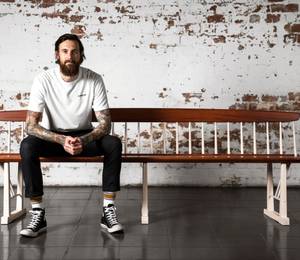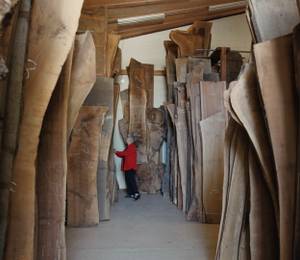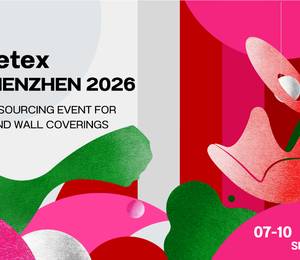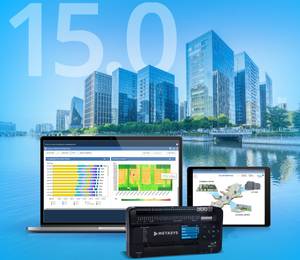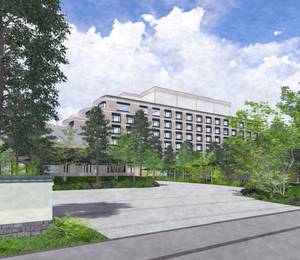Pan Pacific Hotels Group recently announced its expansion plan across the globe, adding 13 new properties across 10 key gateway cities by 2024. With this, the Group will record an increase of almost 30 percent in room inventory, bringing a total of 15,300 rooms in 48 properties in Asia, Oceania, North America and Europe. This is one of the most ambitious moves made by a Singapore-owned global hospitality brand during the global pandemic. Ms Cinn Tan, Chief Sales & Marketing Officer, Pan Pacific Hotels Group tells SEAB more about the expansion strategies that the Group utilised to be successful during the pandemic.
SEAB: The hospitality and airline sectors suffered a huge setback during the coronavirus outbreak in 2021. What steps did the Pan Pacific Hotels Group take to minimize the impact on its staff and business?
CINN: At the onset of the pandemic, we were quick to take on a three-prong strategy – cost containment, revenue preservation and generation to ensure that the Group kept cash-flow positive last year.
While we did tighten our belts for certain expenditures as part of cost containment, we continued to invest in our people, who are the core of our business. We have re-engineered our hotel operations and processes, embarking on job redesign through upskilling and reskilling our associates across lateral services. Efforts include clustering of engineering, sales, marketing and finance resources; improving our central reservations system; combining security and concierge services – made possible with technological advancements in security – and more.
In Singapore, these have been made possible with the various government grants through SkillsFuture schemes like Place-and-Train, OJT and Absentee Payroll. Tapping on such initiatives ensures our company remains competitive, and ready to welcome back international travellers when business gradually resumes.
This strategy has proven essential during the pandemic, as it has helped us maintain zero retrenchment during this challenging time.
We have also been able to soften the pandemic’s impact on business by enhancing and expanding our current offerings. For example, we introduced creative staycation packages including Stay, Hide & Seek with Otah & Friends, 100% Dining Credit, Body & Soul by Club Med and our latest Tea-cation Relaxation packages. We also went into online order and delivery for our F&B outlets, which has been a crucial channel for us during this challenging time. We have innovated as well, with Ezymeet, offering hybrid and virtual meetings to our corporate clients, and even having green rooms for clients to host virtual broadcasts and livestreams.
SEAB: The expansion plan that Pan Pacific Hotels Group announced recently is quite a big one. What expansion strategies did the Group use amidst the ongoing pandemic?
CINN: Our expansion plans are strategic with a long-term view of the recovery and growth of key gateway cities and prime locations across Asia, Oceania, America and Europe. In the longer term, our decision to invest in prime real estate will pay off. Our new developments are mostly in desirable addresses within major CBDs, placing us in a strong position for valuation over the medium- to long-term.
Over the pandemic period, we have taken advantage of the travel lull to work closely on interior design while enhancing operations and services. This ensures that we are ready to welcome visitors with the complete experience once the skies reopen.
This strategy worked well in the lead-up to opening Pan Pacific London in September 2021. During pandemic down-time, we worked with luxury partners such as PLP Architecture, Tom Dixon and Yabu Pushelberg to elevate product quality in the hotel, while bringing aboard the best talents like celebrity Chef Cherish Finden and Chef Lorraine Sinclair to ensure we deliver a true luxury experience. Back home, when Singapore implemented circuit breaker measures last year, PARKROYAL COLLECTION Marina Bay closed and was able to shorten its renovation time from 12 months to nine months.
We continue to use the ongoing pandemic time wisely as well, practising more strategic resource management, to expand with the right quality and in a timely manner. This includes implementing sustainable and biophilic design in PARKROYAL COLLECTION Kuala Lumpur through its roof terraces and sky planters, urban farm, environmentally friendly suppliers and sustainable operations. With our resorts, we are also working to enhance family experiences through Kids’ Club.
As we look forward into the medium and long-term, we are seeing some promising signs of recovery for travel. With nine openings in 2022, we will be able to take advantage of being present where it counts.
SEAB: Pan Pacific Hotels Group is at the forefront of building sustainable hotels. In your opinion, what makes a hotel sustainable?
CINN: Sustainable hotels pay heed to the socio-economic needs of the local community, while having a lowered impact on the environment. Such hotels respect the environment through hotel design, development and operational processes.[1]
In this commitment, a sustainable hotel should demonstrate a holistic sustainability ethos that extends beyond the aesthetics. Under our PARKROYAL COLLECTION brand, we design with five key considerations in line with The United Nation’s Sustainable Development Goals: Green design, executing nature-focused, iconic design with visible sustainability features; reduce, reducing our carbon footprint and the consumption of single-use material in property development and operations; recycle, finding multiple uses for waste or unwanted material, such as converting food waste into plant fertiliser; food and beverage (F&B), sourcing for sustainable suppliers, environmentally friendly packaging; and biophilia, communicating a strong connection with nature through all aspects of hotel design.
With tangible results from the specific features employed – ranging from construction to daily operation – our three PARKROYAL COLLECTION hotels are prime examples of sustainable hotels.
For example, PARKROYAL COLLECTION Pickering’s 15,000 square metres vertical forest covers more than 200 percent of the hotel’s gross floor area, shading the concrete surfaces and reducing the urban heat island effect. Tapping into WOHA’s biophilic design philosophy, much of the hotel is designed with open-air corridors, cutting the amount of energy consumed for air-conditioning.
Rainwater harvesting tanks collect rainwater to irrigate the gardens in the hotel, saving an average of 6000 cubic metres of water a year, equivalent to 2.4 times the volume of an Olympic swimming pool. The hotel also has solar panels and motion sensors installed throughout the property, conserving a combined average of 98,133 kWh per year.
PARKROYAL COLLECTION Marina Bay’s sustainability begins in its foundations. Instead of demolishing the original John Portman-designed building from 1985, we decided to preserve it, significantly cutting our carbon footprint. Preserving the original building is not a common practice because of additional considerations in implementing updated infrastructure, especially with sustainable features in mind. However, we saw this as a chance to creatively incorporate green elements throughout the property, in partnership with FDAT.
We introduced a dramatic “garden-in-a-hotel” concept with more than 2,400 trees, shrubs and groundcovers – an unprecedented experience that immerses our guests in a lush tropical retreat while indoors. We built the atrium’s skylight with low-emissivity, double-glazed glass that reduces indoor ambient temperature by 2°C.
We recently installed 210 rooftop solar panels, generating 121,000kwh of energy per year, and motion sensors throughout the hotel regulate energy use as well. Outside the all-day dining restaurant Peppermint lies an extensive urban farm of more than 60 varieties of edible greens, which provides some 20 percent of produce to the restaurant. The hotel’s bio-digester has also come online, and converts food waste into nutrient water for the Urban Farm.
Further sustainable practices that have been implemented at both hotels include the elimination of single-use plastic at our F&B and MICE venues. Filtered-water taps installed in all guest rooms save up to 360,000 plastic bottles a year per property. We are also installing pumped amenities made from biodegradable plastics in lieu of travel-sized plastic bottles. More than 950 recycling bins are placed across the properties to support our associates and guests in environmental responsibility.
We plan to roll out similar features when PARKROYAL COLLECTION Kuala Lumpur opens in June 2022. This will be the brand’s first step beyond Singapore, and this complex in Bukit Bintang will feature biophilic landscaping and practical green architecture by FDAT and DP Architects.
The new hotel will showcase 13,000 square feet of plants and trees on a roof terrace and 78 sky planters, forming a distinctive lush landscaped façade. We are also working on building sustainable operations in this property, such as motion sensors, a food waste digester, no single-use plastics and an urban farm. As the property is developed, we remain on the lookout for like-minded partners with an equally vested interest in sustainable hospitality innovations.
[1] https://www.hospitalitynet.org/opinion/4106628.html


